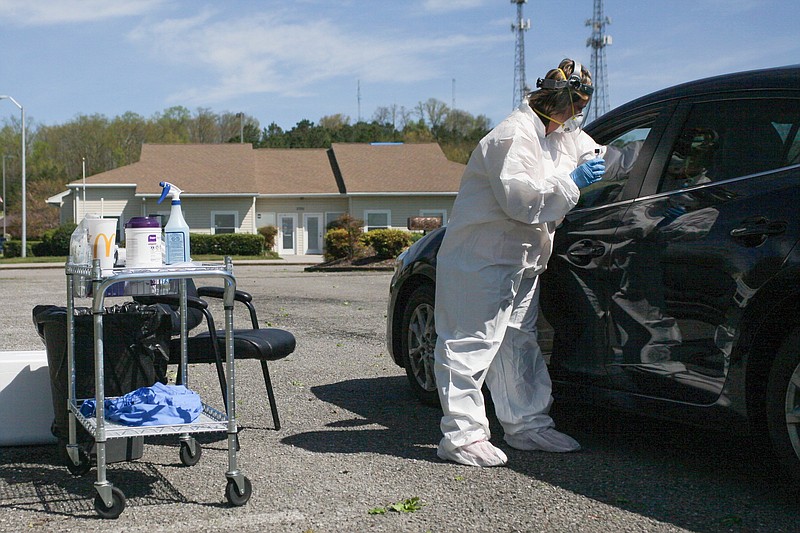The numbers shouldn't be ignored.
Hamilton County's and Tennessee's COVID-19 numbers are rising. And fast. Statewide, there were 600 new cases on Thursday and Friday, bringing the total cases to 16,970. In Hamilton County, on Thursday there was a spike of 33 cases, jumping from 286 to 319 - on top of the 28 new cases the day before, the 18 new cases the day before that and the seven new cases the day before that.
Last week, we'd pretty much leveled out at just over 200. Now the "curve" seems not to be flattening.
The same is true in Georgia, where case numbers jumped by 704 on Friday to 36,681.
What does it mean? We don't know.
Both states led the country in "reopening" at the first of the month. And medical experts have told us that the virus usually takes 10 to 14 days from exposure to onset of symptoms.
On the other hand, in that same time period, testing - while still low - has been on the increase. It stands to reason that if we test more, we'll find more cases.
But a new report from Vanderbilt University Medical Center - while stressing that it is too early to assess the impact of businesses reopening across the state - shows how well social distancing and stay-at-home orders worked to stop the spread of COVID-19 before Tennessee began relaxing restrictions.
Vanderbilt's calculations used state data through May 11 - Monday - and found the statewide number of transmissions expected from each infected person to be between 0.90 and 1.04.
The transmission number - think of it as the transmission rate - can show how fast a disease is spreading in a community. What you want is as close to zero as you can get. On the other end of the spectrum, experts say that with no prevention - like social distancing, masks, even stay-in-place orders - the coronavirus' transmission rate is believed to be around five, said Melissa McPheeters, a Vanderbilt health policy researcher and co-author of the new report.
"So if I get sick and go about my daily business with no mitigation strategies in place, I'm likely to infect about another five people. Each of those might infect another five, so you can see how quickly a disease can spread in a community with a high transmission number," McPheeters said. "To really stamp out an epidemic, you need to get that well below one for an extended period of time."
We also know that in less than two weeks, a single ZIP code representing some of Chattanooga's most at-risk neighborhoods went from having a handful of COVID-19 cases to being a hot spot of cases, with one of every six local cases now coming from the 37407 area, which includes the Clifton Hills and East Lake neighborhoods.
That ZIP code represents less than 3% of Hamilton County's population, but is now home to between 10% and 18% of the county's COVID-19 cases, according to data from the Hamilton County Health Department. It also is more racially diverse than the rest of the county, with nearly 40% of residents being black or African American and more than 25% Hispanic, according to U.S. Census Bureau data. And it has a poverty rate nearly four times higher than the county, with 45% of the population living below the federal poverty line, according to the census.
New research published this week in the Proceedings of the National Academy of Sciences could help explain how people with mild or no symptoms may infect others in close quarters such as offices, nursing homes, crowded shops or other confined spaces.
That research showed that coughs or sneezes may not be the only way people can spread the virus. Just talking can propel thousands of droplets so small they can remain suspended in the air for eight to 14 minutes.
So be your own judge for what the rise in cases may mean in our two states.
Vanderbilt suggests that we use its study as a new baseline to track how the pandemic evolves over the rest of the month and into June.
And the study showing that even just talking may spread the virus certainly strengthens the case for wearing masks.
Becky Barnes, administrator of the Hamilton County Health Department, may have summed it up best.
"There is concern that some people equate the small steps we are taking to reopen our economy to mean that the pandemic is over in Hamilton County," she told The Times Free Press this week in an email. "It is important to know that the pandemic is not over. Our message is not changed regarding all the steps people need to be taking to protect themselves. As people begin to move around, it is vitally important that face coverings be worn by everyone in public when social distancing is not possible."
